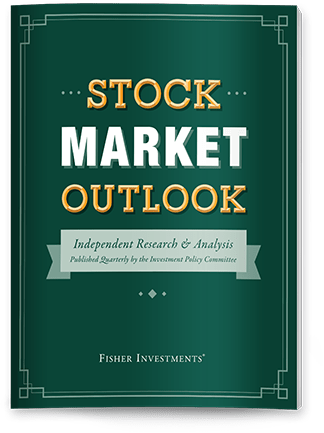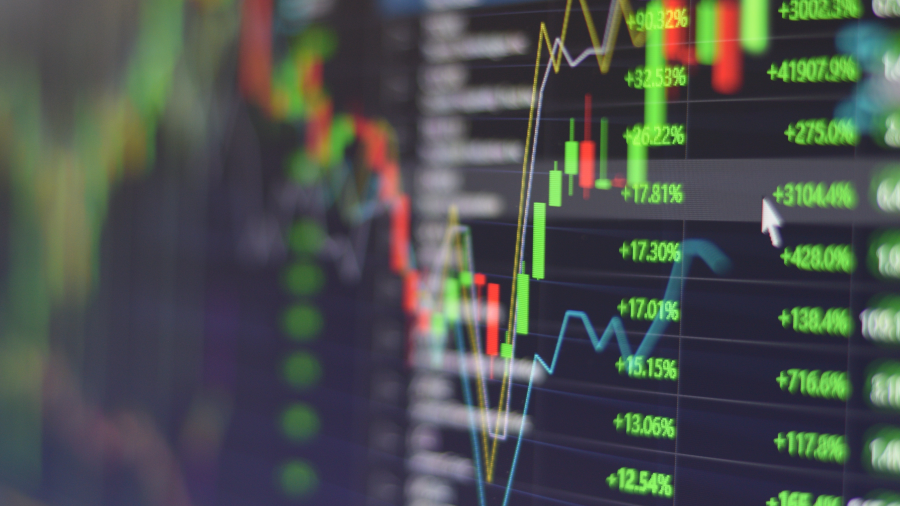Personal Wealth Management / Market Volatility
On Tough Drops and Tough Tariff Talk
Tariff-induced volatility is back. Stay cool.
Editors’ Note: MarketMinder favors no politician nor any political party, assessing developments and policy exclusively for their potential market, personal finance and/or economic effects.
When stocks fall fast and things look scary, here is something helpful to remember: Unless you know something others don’t, you have no basis for reacting in your portfolio.
We say this because the S&P 500 fell -2.7% Friday on renewed trade war fears, with news continuing to emerge after markets closed.[i] Earlier this week, China announced new rare earths[ii] export restrictions, bringing back a sticking point from the tussle earlier this year. Friday morning, in response, President Donald Trump alluded to cancelling talks scheduled for later this month between he and Chinese President Xi Jinping and hinted at retaliatory tariffs. Later in the day, after market close, he posted on Truth Social that he would enact an additional 100% tariff on all Chinese goods and new export controls on “critical software.” There is, as yet, no Executive Order on the subject, but it is possible that comes soon.
Much of this may rekindle speculation of negative market fallout. If you are tempted to do something about this in your portfolio, congratulations: You are human. That is a normal, understandable emotional reaction.
But remember, always: Emotion isn’t a sound investment strategy. If you are fearful, so are millions of others, and markets will have begun registering that fear by the time you can trade on it. You are much likelier to get trampled in a stampede than gain an edge.
Considering how markets work at such times is not the normal emotional reaction, but it is a logical one, and one we think can help you. Over any meaningful stretch, stocks move on surprise—the gap between expectations and reality. Expectations get priced, then stocks move on the surprise as things go better or worse. So if you are trading based on popular headlines and scary stories, you are trading on things markets already priced. What will ultimately drive returns from here is what people don’t currently know that will cause things to go better or worse than expected. Unless you have a strong idea of what that something others don’t know is—something you can use logic and data to show has a strong likelihood of happening—then you have no basis to make a sweeping portfolio decision.
We don’t know how this particular trade spat will unfold. No one does, probably not even the principals. The sharp talk may reverse by Monday. Who knows! But we can glean some things from how this went earlier this year, and those point to stocks probably coming through ok.
On Liberation Day—April 2—Trump announced a raft of blanket and reciprocal tariffs, including a 34% reciprocal tariff on Chinese imports. This sent stocks into a tailspin, which ended after Trump paused the reciprocal tariffs for 90 days on April 8. A stock market recovery began the next day, propelling stocks to new highs through summer and beyond as markets priced in trade reality going better than the initial worst-case scenario fears.
But even as stocks were recovering, trade tensions with China—the lone country to respond to Liberation Day by retaliating—were escalating. After China matched the reciprocal tariff rate and adopted rare earth metals controls, Trump raised the tariff rate over 100%. When China matched that, the US rate went to 145%. This was on April 11, at which point—we repeat—stocks were already rebounding. Trump alluded to easing tariffs a day later, but the reduction to 30% (and China’s reduction to 10%) took a month to materialize. By then, the S&P 500 was up 13.7% from its low.[iii]
Stocks continued rallying as that deal seemingly hit the rocks, with differences lingering over rare earths. Numerous times over the next two and a half months, the détente looked at risk of ending, restoring triple-digit tariffs. The deal finally completed on July 29, at which point the S&P 500 was 28.7% above April’s low.[iv] But even then, it was only a 90-day pause, teeing up late October for a potential return to tough talk … and tough tariff threats.
So we know triple-digit tariffs between the US and China didn’t abort a strong stock market recovery before. Nor did a shaky dealmaking process riddled with false starts and dead ends, which this may just amount to another bout of. And we know that as markets rose in August, September and beyond, the potential for renewed tensions this month was there. Known. Known to people and thus known to markets. So while these things are always impossible to estimate precisely, investors have to consider the possibility that this is at least partially reflected in prices already. Maybe fully.
And you don’t need to know. Daily moves are noise, even when they are big. April showed this once again. The S&P 500 lost -12.1% between market close April 2 and April 8.[v] There was a weekend in there, so it was just four trading days. It was steep, ugly, painful, gut-churning.
But even with that four-day sucker punch, the S&P 500 is still up 12.5% this year, including Friday’s drop.[vi] Globally, things are even better, thanks to non-US stocks’ leadership this year. The MSCI World Index is up 15.6%, a nicely positive year.[vii]
Now, none of this rules out stocks enduring another correction (sharp, sentiment-induced drop of -10% to -20%) now or anytime before yearend. Corrections strike without warning, any time, for any or no reason. We have had two in a calendar year before, most recently in 2018. If so, remember that corrections end as suddenly as they begin, with V-shaped recoveries. And as a silver lining, they reset sentiment lower, extending a bull market’s lifespan. Historically, bull markets have run about 14 months after the bull market’s final correction regained prior highs.[viii]
So stay cool, and remember why you are invested. Think about the long-term goals you are trying to reach. If you own stocks, you probably need long-term growth for some important purpose. That means market-like returns, and to get those, you must be invested in bull markets. This bull market has already survived tariff tremors. A different outcome will probably require something bigger, badder and uglier than what we have already seen.
[i] Source: FactSet, as of 10/10/2025. S&P 500 price return on 10/10/2025.
[ii] Rare earths are metals commonly used in an array of tech products. While they aren’t rare in the literal sense of the term globally, the extraction is very dirty and chiefly done in China. So extracted rare earths are, well, rare.
[iii] Ibid. S&P 500 total return, 4/8/2025 – 5/11/2025.
[iv] Ibid. S&P 500 total return, 4/8/2025 – 7/28/2025.
[v] Ibid. S&P 500 total return, 4/2/2025 – 4/8/2025.
[vi] Ibid. S&P 500 total return, 12/31/2024 – 10/10/2025.
[vii] Ibid. MSCI World Index return with net dividends, 12/31/2024 – 10/10/2025.
[viii] Source: FactSet, as of 9/29/2025. Statement based on S&P 500 average time from the point the bull market’s final correction reached recovery to end of bull market, 1928 – 2024.
If you would like to contact the editors responsible for this article, please message MarketMinder directly.
*The content contained in this article represents only the opinions and viewpoints of the Fisher Investments editorial staff.
Get a weekly roundup of our market insights
Sign up for our weekly e-mail newsletter.

You Imagine Your Future. We Help You Get There.
Are you ready to start your journey to a better financial future?

Where Might the Market Go Next?
Confidently tackle the market’s ups and downs with independent research and analysis that tells you where we think stocks are headed—and why.





